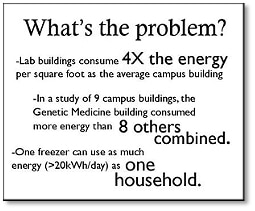We like spreading the word about the significant help our ULT freezers offer to research organizations and institutions pursuing sustainability goals . . . and it’s very encouraging when we find others who are talking about it, too. My next couple of posts will give a shout-out to some third parties and users of our products who are telling the Stirling sustainability story better than we can . . .

The Chilling Effect
In her article The Chilling Effect, Emily Byrd recently shared the challenges of Green Labs, a University of North Carolina committee devoted to bringing together students, staff and faculty interested in waste reduction and efficiency in labs on campus. Byrd writes about Green Labs’ latest initiative, the “National Freezer Challenge”, which is a multi-university competition that aims to improve sustainability in research facilities by changing how scientists use ultra-low temperature freezers. Efforts like the National Freezer Challenge are essential to raising consciousness about ULT freezers and energy use.
When people understand this issue they are so much more likely to seek solutions. This article shares a great example of this fact by pointing to a study of nine UNC campus buildings. The study concluded that the Genetic Medicine Building consumed more energy than the other eight combined because it houses more than 100 ultra-low temperature freezers.
Ms. Byrd’s article also refers to Duke University’s sustainability program and the success achieved by turning to Stirling Ultracold freezers. Citing Randy Smith, head of Duke’s Green Labs Committee . . .
“We bought a Stirling to test it, and it just blew our minds, really. There’s a lot of money to be saved when it comes to these freezers, and now Stirlings are the only new ones we’re allowed to plug in.”
It is gratifying to see UNC making progress on this issue and I appreciate Emily Byrd for publishing her account of the process. The word is getting out!








